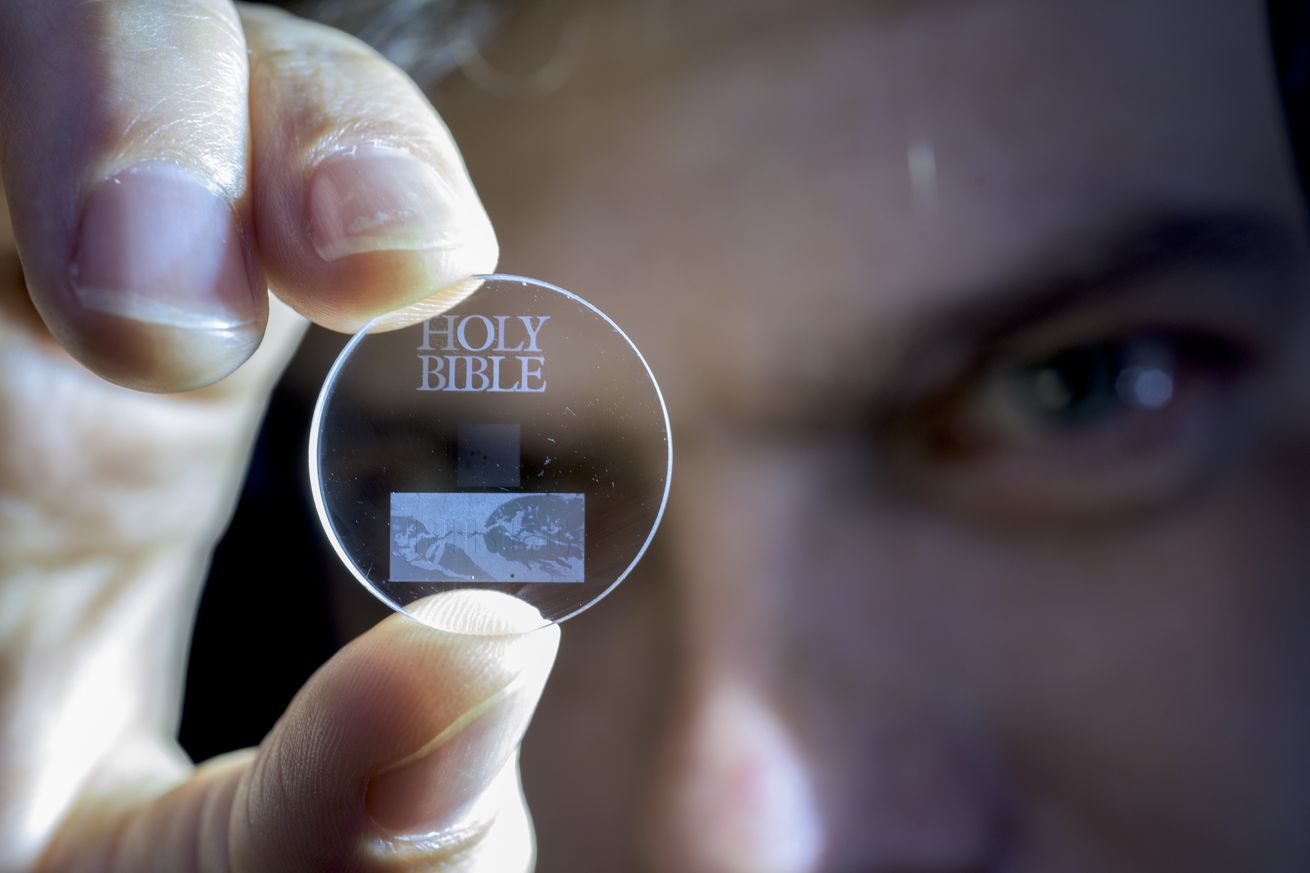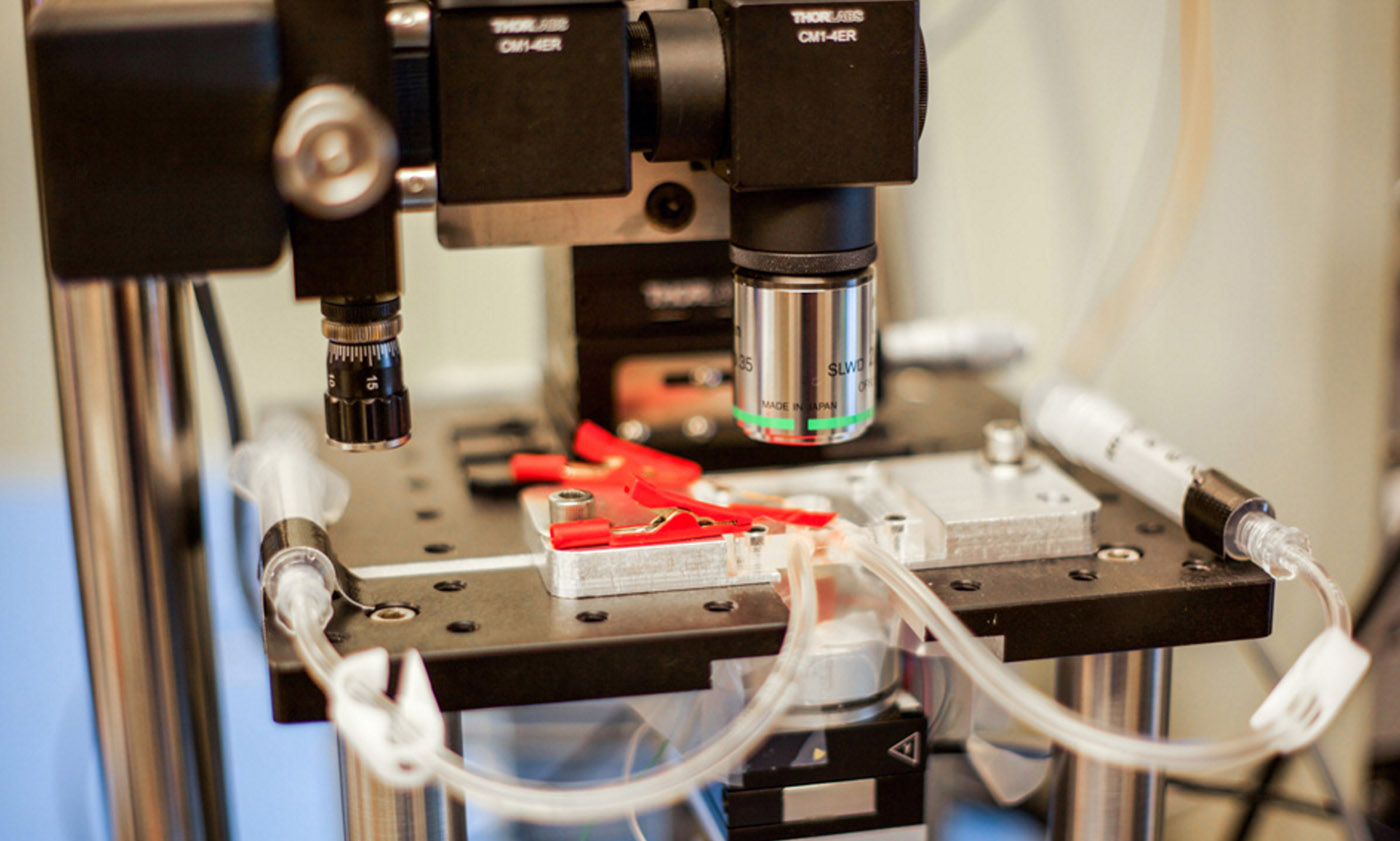
Growing human tissue is old hat, but being able to measure activity inside flesh is harder -- any electrical probing tends to damage the cells. But a new breakthrough from Harvard researchers has produced the first "cyborg" tissue, created by embedding functional, biocompatible nanowires into lab-grown flesh. In a process similar to making microchips, the wires and a surrounding organic mesh are etched onto a substrate, which is then dissolved, leaving a flexible mesh. Groups of those meshes are formed into a 3D shape, then seeded with cell cultures, which grow to fill in the lattice to create the final system. Scientists were able to detect signals from heart and nerve cell electro-flesh made this way, allowing them to measure changes in response to certain drugs. In the near-term, that could allow pharmaceutical researchers to better study drug interaction, and one day such tissue might be implanted in a live person, allowing treatment or diagnosis. So, would that make you a cyborg or just bionic? We'll let others sort that one out.
Filed under: Science, Alt
Harvard scientists grow human cells onto nanowire scaffold to form 'cyborg' skin originally appeared on Engadget on Tue, 28 Aug 2012 20:12:00 EDT. Please see our terms for use of feeds.
Permalink  TG Daily
TG Daily |
 Harvard
Harvard |
Email this |
Comments
 Today on In Case You Missed It: IBM Research in Zurich is using fluid to both power and cool computer chips, modeled off of the way the human brain works. University of Southampton scientists created small glass discs for mega data storage that the...
Today on In Case You Missed It: IBM Research in Zurich is using fluid to both power and cool computer chips, modeled off of the way the human brain works. University of Southampton scientists created small glass discs for mega data storage that the...
 Today on In Case You Missed It: IBM Research in Zurich is using fluid to both power and cool computer chips, modeled off of the way the human brain works. University of Southampton scientists created small glass discs for mega data storage that the...
Today on In Case You Missed It: IBM Research in Zurich is using fluid to both power and cool computer chips, modeled off of the way the human brain works. University of Southampton scientists created small glass discs for mega data storage that the...
 Researchers at the University of Southampton's Optical Research Center announced on Tuesday that they've perfected a technique that can record data in 5 dimensions and keep it safe for billions of years. The method etches data into a thermally stable...
Researchers at the University of Southampton's Optical Research Center announced on Tuesday that they've perfected a technique that can record data in 5 dimensions and keep it safe for billions of years. The method etches data into a thermally stable...
 Atomic force microscopes are the tool of choice to see the tiniest atomic structures, right down to hydrogen bonds. The drawback with current models is that they're too slow to create anything but static images, making them useless for processes like...
Atomic force microscopes are the tool of choice to see the tiniest atomic structures, right down to hydrogen bonds. The drawback with current models is that they're too slow to create anything but static images, making them useless for processes like...




